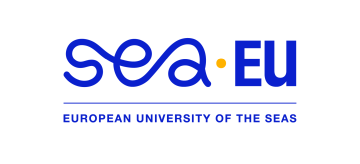website: www.aquatic-evolution.net
google scholar: https://scholar.google.com/citations?user=Vsz_vyAAAAAJ&hl=en
ORCID: https://orcid.org/0000-0003-1891-7901
ResearchGate profile: https://www.researchgate.net/profile/Christine-Ewers
I am part of the research group of Dr. Dirk Brandis, director of the Zoological Museum of Kiel University
My research group has two main foci: anthropogenically driven evolution and life history evolution. We study both aspects by investigating the molecular ecology of aquatic invertebrates. In the last years, my colleagues and I have taken advantage of the newly developing field of museomics. Using genomic information extracted from natural history collections, we can begin to understand how humans have altered microbiomes, populations, species and whole communities.
Genomics
Museomics
Next-gen sequencing
DNA sequencing
Species identification
Bioinformatics
Population genetic analysis
Geburzi JC, Heuer N, Homberger L, Kabus J, Moesges Z, Ovenbeck K, Brandis D, C Ewers (2022). “An environmental gradient dominates ecological and genetic differentiation of marine invertebrates between the North and Baltic Sea”. Ecology & Evolution 12: e8868. https://onlinelibrary.wiley.com/doi/10.1002/ece3.8868
Homberger L, J Xu, D Brandis, T-Y Chan, H Keirsebelik, M Normant-Saremba, J Schoelynck, KH Chu, C Ewers-Saucedo (2022). “Genetic and morphological evidence indicates the persistence of Japanese mitten crab mitochondrial DNA in Europe for over 20 years and its introgression into Chinese mitten crabs”. Neobiota 73: 137–152. https://neobiota.pensoft.net/articles.php?id=72566&journal_name=neobiota
Ewers-Saucedo C, A Allspach, C Barilaro, A Bick, A Brandt, D Fiege, S Füting, B Hausdorf, S Hayer, M Husemann, U Joger, C Kamcke, M Küster, V Lohrmann, I Martin, P Michalik, G-B Reinicke, M Schwentner, M Stiller, D Brandis (2021). “Natural history collections recapitulate 200 years of faunal change“. Royal Society Open Science 8: 201983. https://royalsocietypublishing.org/doi/10.1098/rsos.201983
Chan BKK, AS Gale, H Glenner, N Dreyer, C Ewers-Saucedo, M Pérez-Losada, GA Kolbasov, KA Crandall, J Høeg (2021). “The Evolutionary Diversity of Barnacles with an Updated Classification of Fossil and Living Forms”. Proceedings of the Royal Society B: Biological Sciences zlaa160. https://academic.oup.com/zoolinnean/article/193/3/789/6149353
Hayer, S., D Brandis, A Immel, J Susat, M Torres-Oliva, C Ewers-Saucedo, B Krause-Kyora (2021). “Phylogeography in an “oyster” shell provides first insights into the genetic structure of an extinct Ostrea edulis population”. Scientific Reports 11:2307. https://www.nature.com/articles/s41598-021-82020-x
